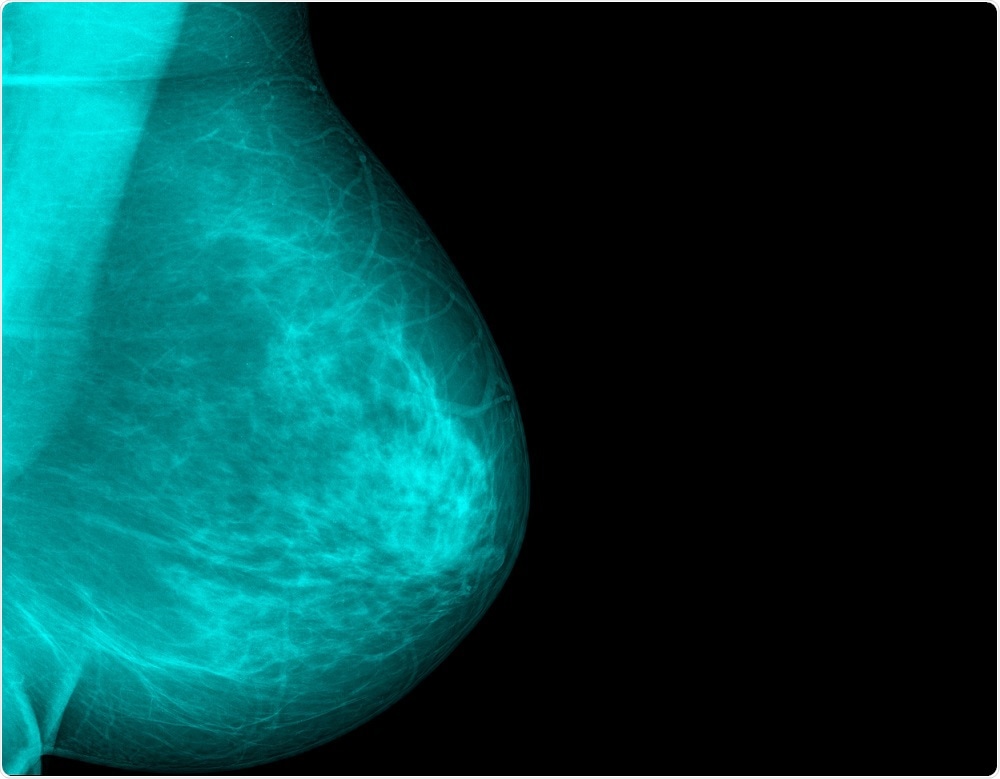
Mammograms will soon include breast density says FDA
The US Food and Drug Administration has proposed some drastic new steps to update and enhance mammography as a screening tool for breast cancer. Mammograms are an important tool in screening for breast cancer in women and also men.
 Xray Computer | Shutterstock
Xray Computer | ShutterstockWhile the FDA has been in charge of regulating mammography facilities for more than two decades, the new amendments propose key changes that could potentially impact millions of Americans.
Breast cancer is the leading cancer in women, and the second biggest killer. Around 12.4% of women will be diagnosed with breast cancer during their lifetime, according to the National Cancer Institute (NCI). In 2018, breast cancer was diagnosed in over 260,000 women, and claimed the lives of almost 41,000 women.
The new amendments make it mandatory for screening facilities to provide patients and healthcare professionals with more detailed information that could facilitate better decision making.
This includes any failure to comply with FDA standards, or the presence of dense breast tissue, both of which have an important role in deciding the quality of the mammogram.
At present, the regulatory legislation is the Mammography Quality Standards Act of 1992 (MQSA), which was passed by Congress to ensure the quality of mammography in early detection of breast cancer.
The MQSA gives the FDA authority to oversee mammography facilities, making sure they meet quality standards. This includes accreditation, certification, and annual inspections, as well as the power to enforce standards.
Breast density will be a key change in the requirements
One key amendment to this act would require mammography facilities to tell patients and their referring physicians if breast density was high. This information would be added to the lay summary letter and medical report given to the patient and referring providers, respectively.
Dense breasts have more fibroglandular tissue relative to fat. This obscures the changes that arouse the suspicion of breast cancer, making the resulting images less sensitive and harder to interpret. To make things worse, dense breasts may be at higher risk for breast cancer.
The FDA suggests specific language in the report or lay summary to tell patients how their breast tissue density affects mammographic accuracy, and to advise them to talk to their health care providers about what it means, and how it relates to breast cancer risk in general, and in their particular case.
Other amendments seek to give more useful information to health care providers by adding three new categories to mammographic assessment. One of these is called “known biopsy proven malignancy,” and makes it clear to the doctor that the patient undergoing mammography is already known to have breast cancer.
Another proposed change would require mammography facilities to identify themselves more clearly to the healthcare professionals and patients. This will facilitate further communication following the procedure.
Thus, these amendments will modernize the quality standards for mammography, and allow FDA to enforce regulatory norms, allowing it to act upon violations.
Mammography providers are being encouraged to communicate better with patients
According to Amy Abernethy, FDA Principal Deputy Commissioner, the FDA wants to make sure that mammography facilities communicate more fully with patients and medical professionals. This in turn will hopefully facilitate meaningful talk about the individual patient’s risk of breast cancer.
She points out that in the age group of 40-plus years, more than half the women in the US have dense breasts. Proper information on what this means in the context of breast cancer could help patients better understand their risk, and improve early diagnosis – an important part of a wider strategy to ensure breast health.
She says, “Today’s proposed amendments [will] provide patients with tools and information to fight breast cancer effectively.”
Jeff Shuren, who heads the Center for Devices and Radiological Health at the FDA, backs the amendments being proposed. Shuren says that the new regulations will provide better FDA oversight of mammography facilities, helping to enforce quality standards and improve communication with the patient.
He points out that as a result, patients and providers would rapidly get the message, when required, that they might need to opt for a better evaluation or for another mammogram.
The new amendments will also take advantage of developments such as 3D digital screening tools.
Source:
This article summarizes the information found within the official FDA press release: FDA advances landmark policy changes to modernize mammography services and improve their quality.






















.jpg)










No hay comentarios:
Publicar un comentario